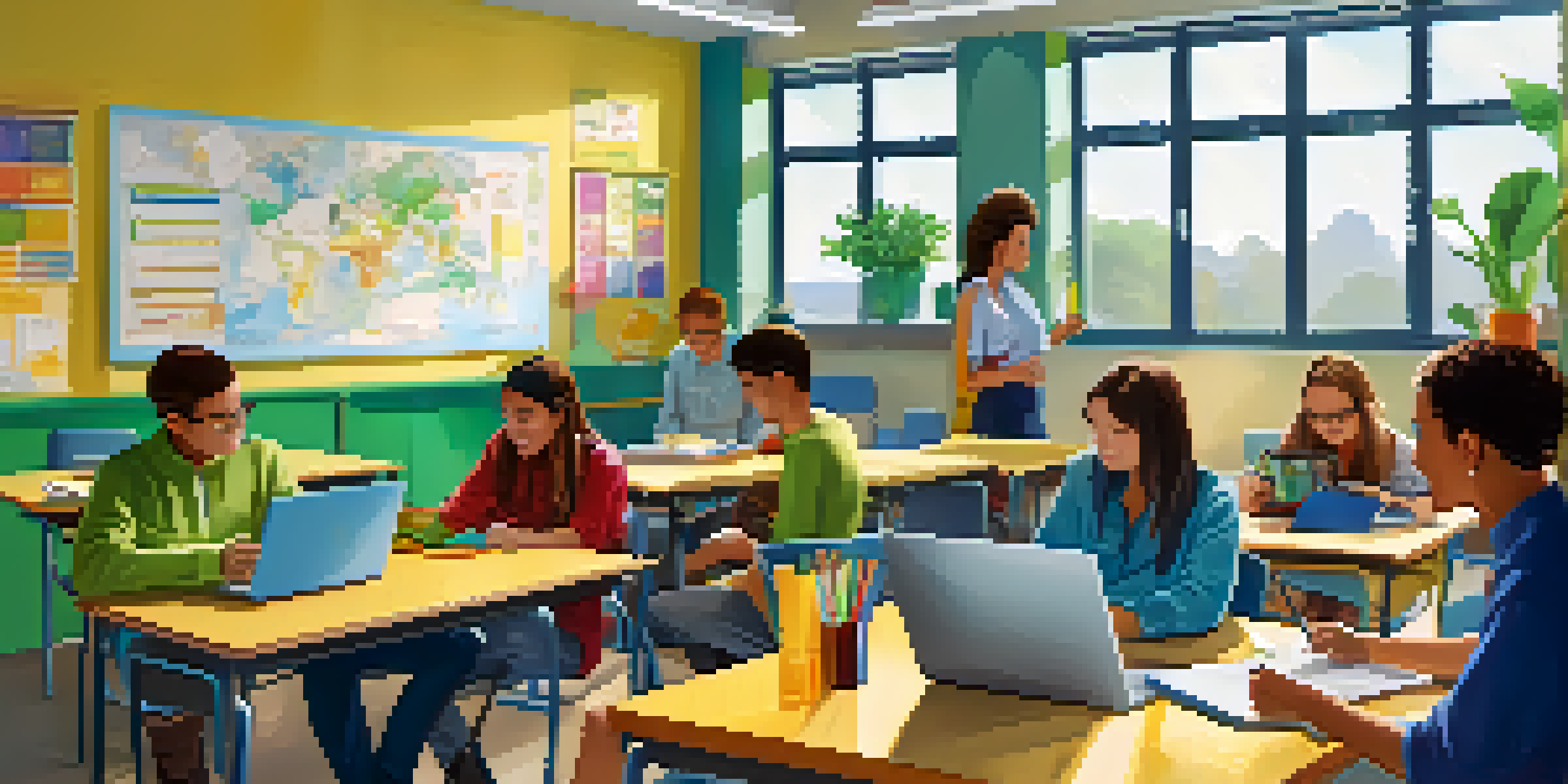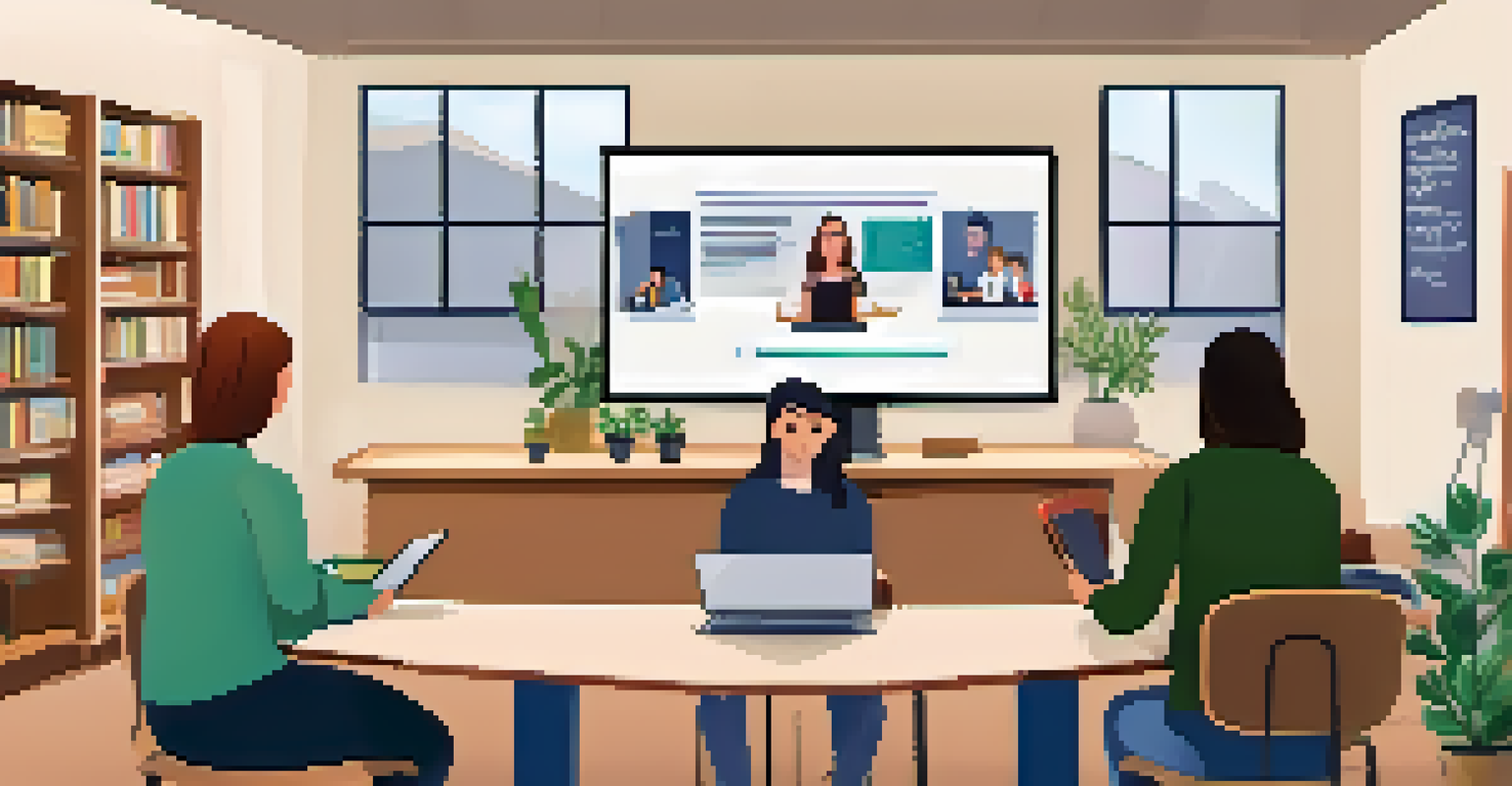Best Practices for Implementing Blended Learning Models

Understanding Blended Learning: A Quick Overview
Blended learning combines traditional face-to-face instruction with online learning, creating a flexible educational experience. This model allows students to learn at their own pace while still benefiting from direct teacher interaction. By integrating technology into the classroom, educators can cater to diverse learning styles and preferences.
Blended learning is not just about technology; it's about creating a holistic learning environment that empowers students.
Think of blended learning as a recipe that mixes different ingredients—classroom interactions and online resources—to create a delicious educational dish. This approach can enhance engagement and retention, making learning more enjoyable. As schools and institutions increasingly adopt this model, understanding its fundamentals is crucial for success.
In essence, blended learning isn't just about technology; it's about creating a holistic learning environment that empowers students. It's essential to grasp its core components to implement it effectively.
Setting Clear Goals and Objectives for Learning
Before diving into blended learning, it's crucial to establish clear goals and objectives. These targets should align with curriculum standards and address the specific needs of your students. By setting measurable outcomes, you can better gauge the effectiveness of your blended learning approach.

For example, if your goal is to improve students' critical thinking skills, you might incorporate online discussions or collaborative projects. This clarity helps in designing activities that are purposeful and engaging. Plus, when everyone knows the objectives, it creates a shared vision for success.
Blended Learning Enhances Flexibility
Blended learning combines in-person and online instruction, allowing students to learn at their own pace while benefiting from direct teacher interaction.
Ultimately, clear goals not only guide your instructional strategies but also provide a roadmap for students. They will understand what is expected of them and how to achieve it.
Choosing the Right Technology Tools for Blended Learning
Selecting the appropriate technology tools is a vital step in implementing blended learning effectively. This includes learning management systems (LMS), online assessment tools, and collaborative platforms. The right tools can enhance the learning experience and streamline the administrative tasks for educators.
The best way to predict the future is to create it.
Consider tools like Google Classroom or Moodle that facilitate easy communication and resource sharing. Each tool should align with your established goals and be user-friendly for both teachers and students. Remember, the goal is to enhance learning, not complicate it with overly complex technology.
By carefully choosing your technology, you can create a seamless blend of online and in-person learning. This thoughtful integration can lead to a more engaging and effective educational experience.
Designing Engaging and Interactive Learning Activities
Engagement is key in any learning environment, and blended learning is no exception. When designing activities, think about how to incorporate both online and face-to-face elements that captivate students. For instance, interactive quizzes can be administered online, followed by group discussions to deepen understanding.
Real-world applications can also significantly enhance engagement. Imagine students working on a project that requires them to research online, then present their findings in class. This blend of independent research and collaborative learning fosters a richer educational experience.
Setting Clear Goals is Essential
Establishing clear, measurable objectives helps guide instructional strategies and creates a shared vision for success among students.
By focusing on interactive and hands-on activities, educators can maintain student interest and motivation. After all, learning should be an adventure, not a chore!
Fostering a Supportive Learning Community
Creating a supportive learning community is essential for the success of blended learning. This environment encourages open communication, collaboration, and peer support among students. When learners feel connected, they are more likely to engage actively and take ownership of their education.
Consider incorporating team-building activities or group projects that require collaboration, whether online or in person. This not only builds relationships but also helps students develop essential social and teamwork skills. Encouraging peer feedback and discussions can also foster a sense of belonging.
Ultimately, a supportive learning community enhances the overall educational experience. It empowers students to take risks, ask questions, and support one another in their learning journeys.
Evaluating and Assessing Student Progress Effectively
Assessing student progress in a blended learning environment can be more nuanced than traditional methods. It’s essential to use a variety of assessment tools, including online quizzes, peer evaluations, and project-based assessments. This diverse approach provides a more comprehensive view of student understanding and skills.
For instance, you might combine formative assessments, like quick polls during online sessions, with summative assessments, such as final projects. This blend not only tracks progress but also allows for timely feedback, helping students improve continuously. It's about building a culture of growth and learning.
Supportive Community Boosts Learning
Creating a supportive learning community encourages collaboration and peer support, enhancing student engagement and ownership of their education.
By employing varied assessment strategies, educators can better support student learning and adapt their teaching methods accordingly. This responsiveness is key to fostering a successful blended learning environment.
Providing Ongoing Professional Development for Educators
For blended learning to thrive, educators must receive ongoing professional development. This training should focus on both pedagogical strategies and technology integration. By equipping teachers with the skills and knowledge they need, you can enhance the overall effectiveness of your blended learning model.
Consider workshops, peer mentoring, or online courses that allow teachers to share best practices and learn from one another. This collaborative approach not only builds expertise but also fosters a culture of continuous improvement. Remember, when teachers feel confident, their students benefit.

Ultimately, investing in professional development is an investment in student success. By empowering educators, you create a stronger foundation for blended learning.